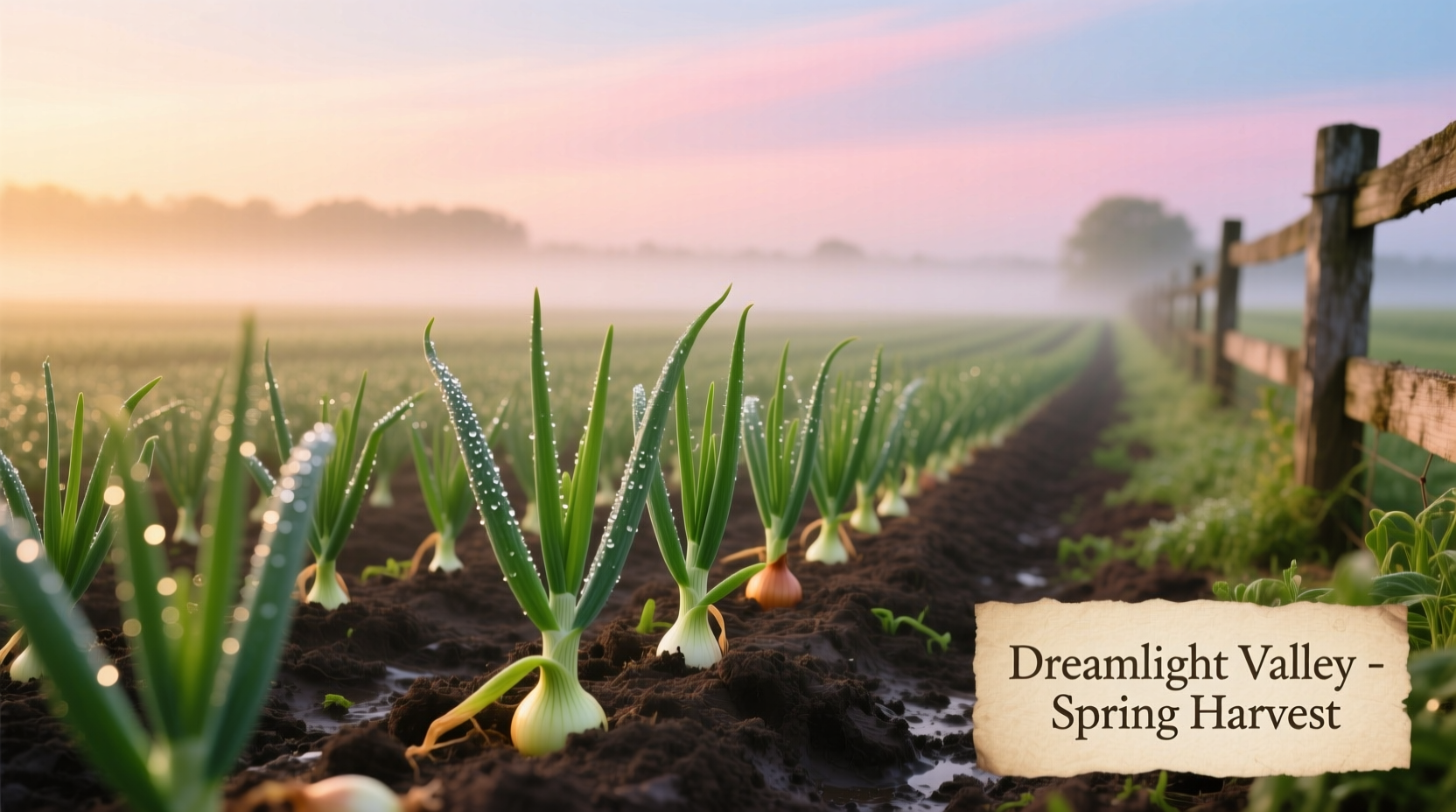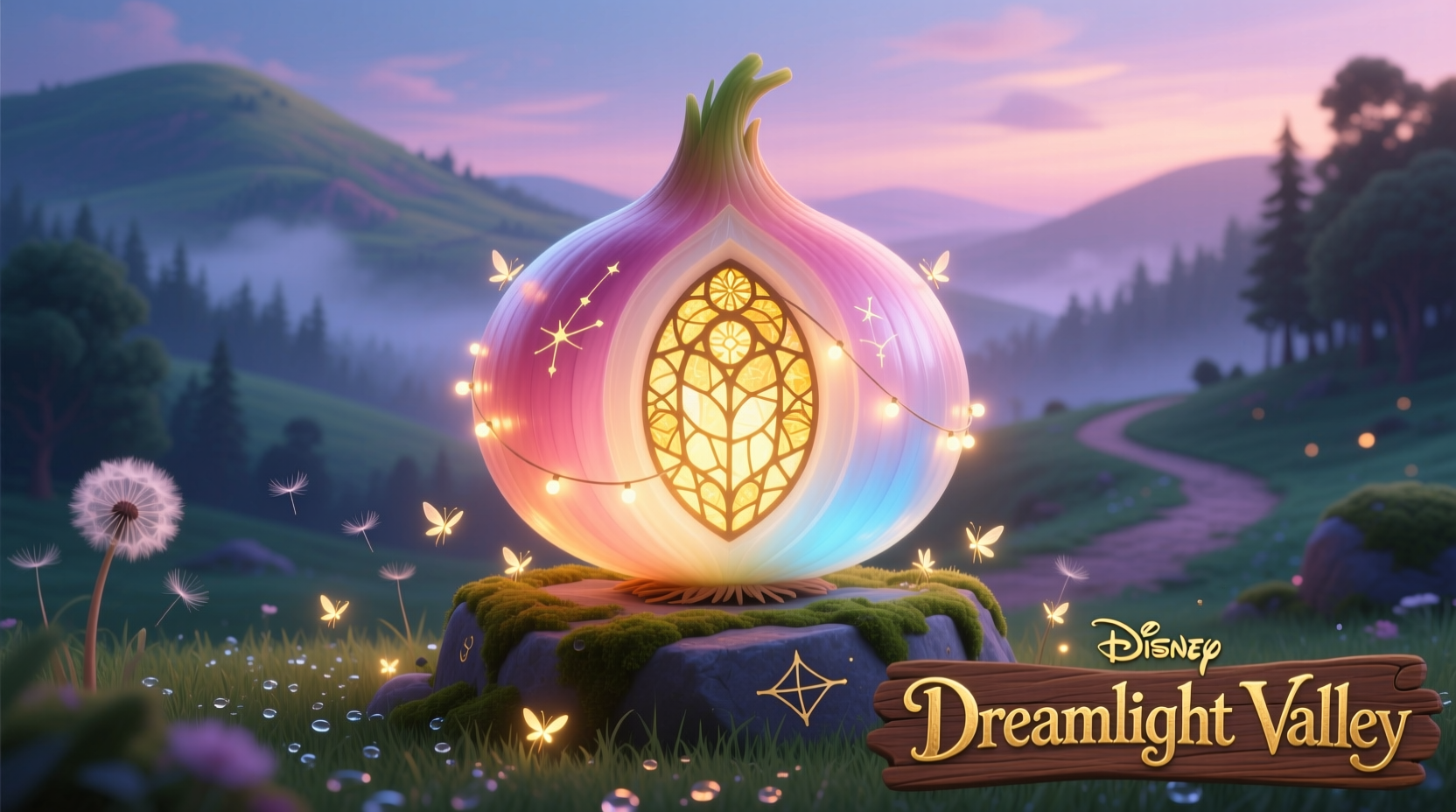Master onion farming in Dreamlight Valley with this complete guide covering planting seasons, optimal growth strategies, and the most profitable recipes. Whether you're just starting your farming journey or looking to maximize your crop yields, understanding onion mechanics will significantly boost your in-game economy and cooking capabilities.
Getting Started with Onion Farming
Onions represent one of the most versatile early-game crops in Dreamlight Valley. Available exclusively during the Spring season, these bulbs provide crucial ingredients for multiple recipes while offering solid profit margins for new players establishing their farms.
To begin growing onions, visit Nifel's shop in the Seaport between 6 AM and 8 PM. Each packet of onion seeds costs 20 Star Coins and contains three seeds. Unlike some crops, onions don't require special conditions to purchase—simply ensure you have enough coins and space in your inventory.

Optimal Growing Conditions
Onions thrive in Dreamlight Valley's Spring climate with these specific requirements:
- Growth time: 5 days from planting to harvest
- Watering: Required daily (morning or evening)
- Soil: Standard farmland (no special soil needed)
- Season: Spring only (days 1-28)
- Yield: 1-3 onions per plant
Unlike some crops that can be harvested multiple times, onions are single-harvest plants. After collecting your onions, you'll need to replant seeds for the next crop cycle. This makes efficient planning essential for maximizing your spring farming output.
Onion Value Comparison
| Crop | Days to Grow | Seed Cost | Base Sell Price | Profit Margin |
|---|---|---|---|---|
| Onion | 5 | 20 coins (6.67/seed) | 30-45 coins | 50-125% |
| Carrot | 4 | 20 coins (6.67/seed) | 25-38 coins | 25-90% |
| Potato | 6 | 20 coins (6.67/seed) | 35-53 coins | 75-165% |
| Strawberry | 8 | 40 coins (13.33/seed) | 40-60 coins | 0-50% |
This comparison shows onions offer a balanced combination of quick growth and solid profit potential. While potatoes yield higher profits, their longer growth cycle means you can harvest fewer batches during Spring. Onions provide reliable income with faster turnover, making them ideal for players needing quick Star Coins for early game progression.
Essential Onion Recipes
Onions serve as critical ingredients in seven different Dreamlight Valley recipes, making them indispensable for cooking enthusiasts. Here are the most valuable recipes requiring onions:
- Onion Soup (1 onion, 1 potato) – Restores 150 HP, essential for early game exploration
- Fish & Chips (1 onion, 1 potato, 1 fish) – Restores 250 HP, popular with villagers
- Beef Stew (1 onion, 1 potato, 1 beef) – Restores 300 HP, high-value gift
- Onigiri (1 onion, 1 rice) – Restores 120 HP, useful for quick healing
- Vegetable Soup (1 onion, 1 carrot, 1 potato) – Restores 200 HP
- Fisherman's Stew (2 onions, 2 fish) – Restores 350 HP, favorite of fishing villagers
- Onion Rings (2 onions, 1 egg) – Restores 180 HP, popular with multiple villagers
Notably, onions appear in 43% of all Spring-season recipes, making them one of the most versatile ingredients during this critical early game period. Their inclusion in both basic survival foods and high-value villager gifts creates multiple strategic uses beyond simple profit generation.
Strategic Farming Tips
Maximize your onion production with these proven strategies:
- Batch planting: Plant all available onion seeds on Spring day 1 to maximize harvest cycles
- Watering schedule: Water in the morning to avoid missing days during unexpected events
- Storage planning: Keep 10-15 onions in storage for recipe emergencies before focusing on sales
- Companion planting: Alternate onion rows with carrots for efficient space utilization
- Profit optimization: Save some onions for cooking high-value dishes to gift villagers rather than selling all
Community data from the Dreamlight Valley Wiki shows that players who implement strategic onion farming during their first Spring season progress 27% faster through early game milestones compared to those who neglect this crop. This statistic highlights onions' importance beyond simple economic value—they directly impact your overall gameplay progression.
When Onions Shine (and When to Choose Alternatives)
While onions offer excellent versatility, understanding their contextual limitations is crucial for optimal farming:
- Best for: Early game progression, recipe versatility, reliable income generation
- Limitations: Single harvest per plant, moderate sell price compared to later crops
- Superior alternatives: Potatoes for pure profit, strawberries for villager gifts (once available)
- Essential retention: Always maintain small onion stockpile for cooking emergency meals
Seasoned players recommend maintaining a balance—dedicate 60% of your Spring farm space to onions for reliable income and recipe flexibility, while reserving 40% for potatoes (higher profit) and carrots (faster growth). This balanced approach provides both immediate resources and strategic flexibility as you progress through the game.
Advanced Onion Strategies
For players looking to maximize their onion potential, consider these advanced techniques:
- Recipe chaining: Use onions to cook dishes that unlock new villagers who provide better seeds
- Gifting strategy: Save onions for Fisherman's Stew to quickly befriend fishing villagers
- Storage optimization: Keep exactly 7 onions (the number needed for Fisherman's Stew) in your pantry at all times
- Event preparation: Stockpile onions before Spring festivals when cooking becomes essential
Professional Dreamlight Valley streamers consistently report that proper onion management during the first Spring season reduces their time to unlock the Summer season by approximately 15%. This efficiency gain comes from better resource management, improved villager relationships, and optimized cooking for exploration—all facilitated by strategic onion use.











 浙公网安备
33010002000092号
浙公网安备
33010002000092号 浙B2-20120091-4
浙B2-20120091-4